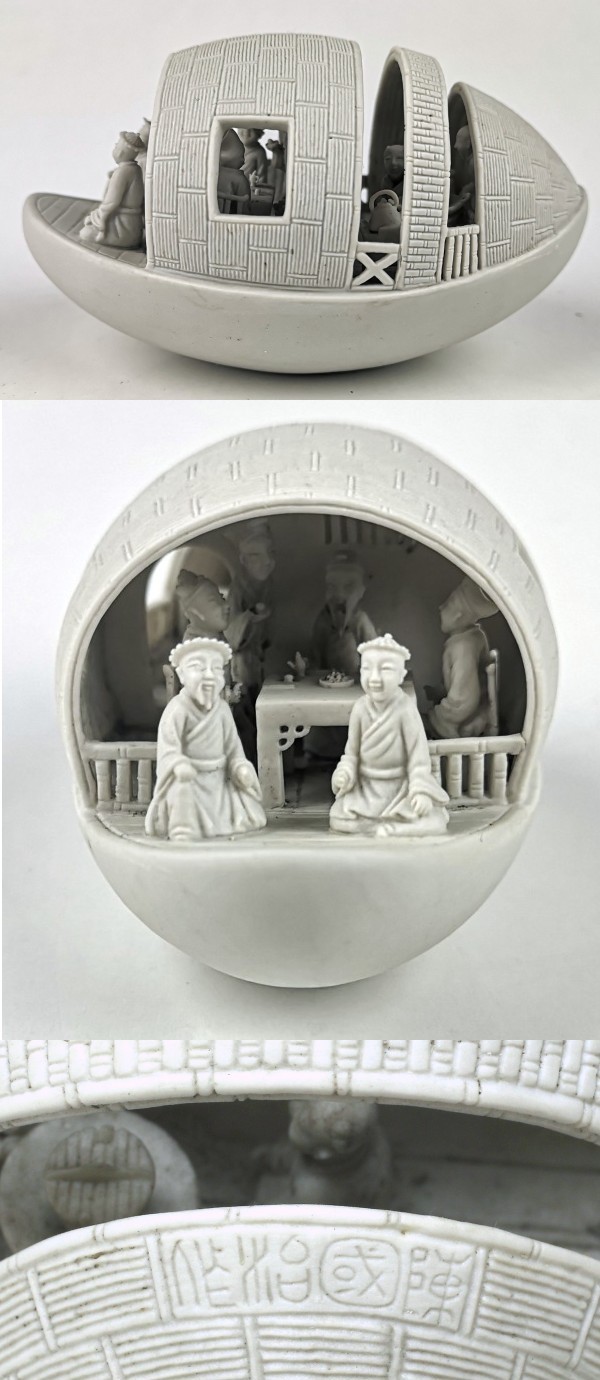
Carved biscuit Porcelain boat, by Chen Guozhi, mid 19th centuy
© JE Nilsson Collection 2023
Bisque firing is an initial firing at a low temperature to give a dry porcelain piece a certain amount of strength to facilitate further handling, for example polishing, carving, cutting or before applying any decoration that will be under the glaze, before a final firing. Typical of Japanese porcelain.
Chinese potters did as a rule not use bisque fired their porcelain before painting any underglaze decoration, while this was common or the norm, with Japanese porcelain.
In general any un-glazed porcelain would be referred to as Biscuit however this is not entirely correct. 'Biscuit' comes from the French 'bis-cuite', meaning 'twice baked', although the term is most commonly used for unglazed wares that have had only a single firing. This is because the first 'baking' implied in its original usage would have been to fuse raw materials, not for firing the finished ware.
Sometimes porcelain figures and ornamental wares are left in the unglazed 'biscuit' state for aesthetic reasons. In Europe, Biscuit porcelain was used for making figures at the end of the 18th century and the beginning of the 19th century at the Sevres porcelain factory, Meissen and at the Derby porcelain factories in England.
The glaze used to add colors to Chinese bisque-fired porcelain is typically an overglaze enamel. Overglaze enamels are applied to the surface of already glazed and fired porcelain pieces, and then they are fired again at a lower temperature to allow the enamels to mature and adhere to the surface without melting into the body of the porcelain.
The choice of enamel depends on the desired effect and the firing temperature. The enamels are mixed with a medium to allow them to be applied smoothly to the porcelain surface, and they come in a wide range of colors.
The key is that the overglaze enamels are fired at a temperature that is lower than the initial high-temperature firing of the bisque porcelain, allowing the enamels to vitrify and form a glassy surface layer without becoming part of the porcelain body.
A